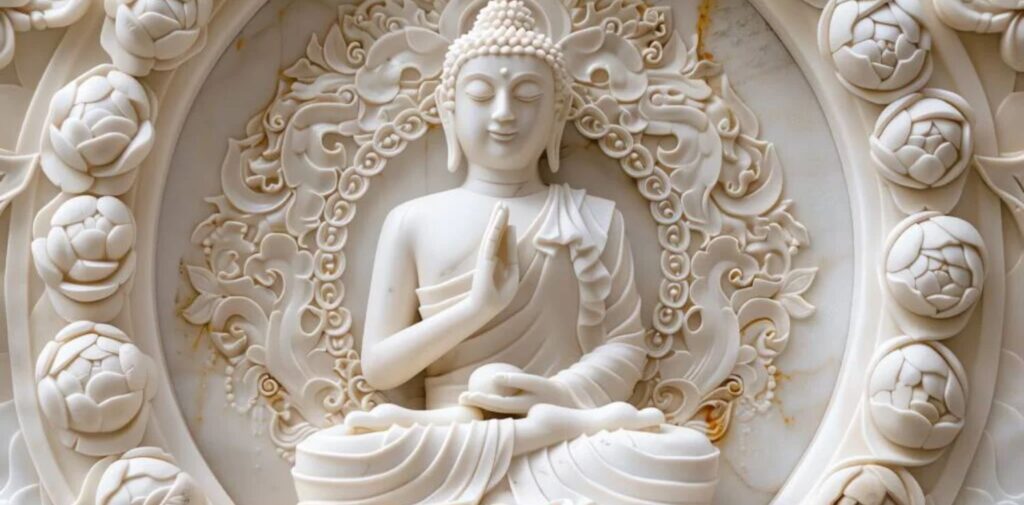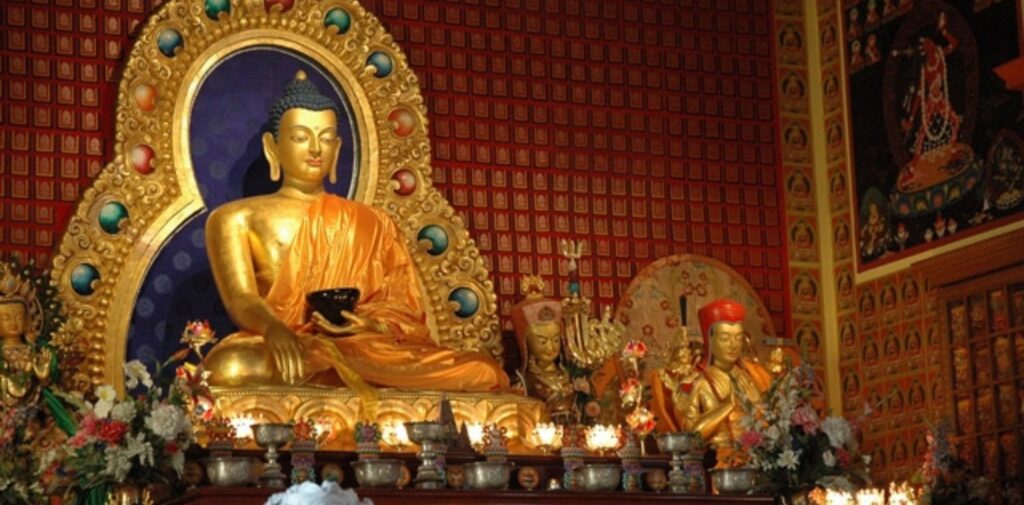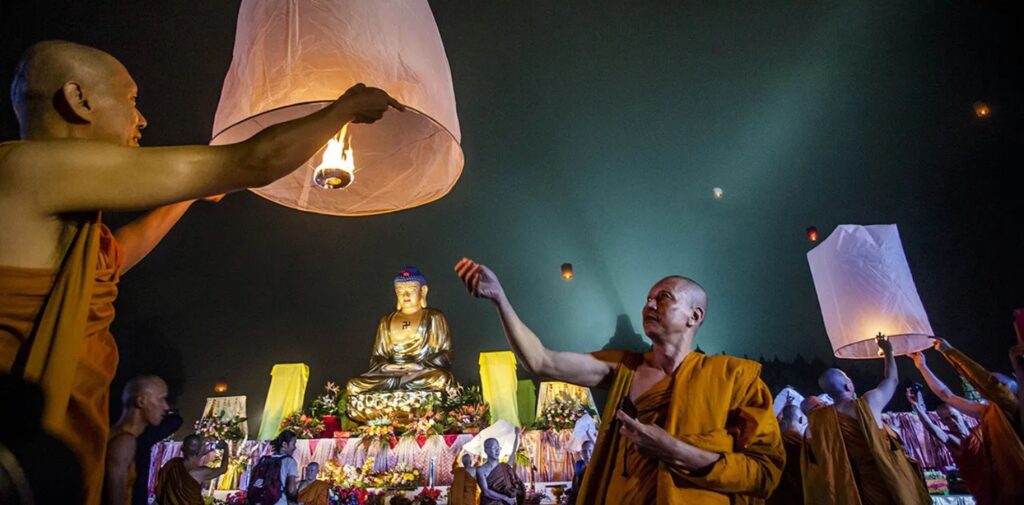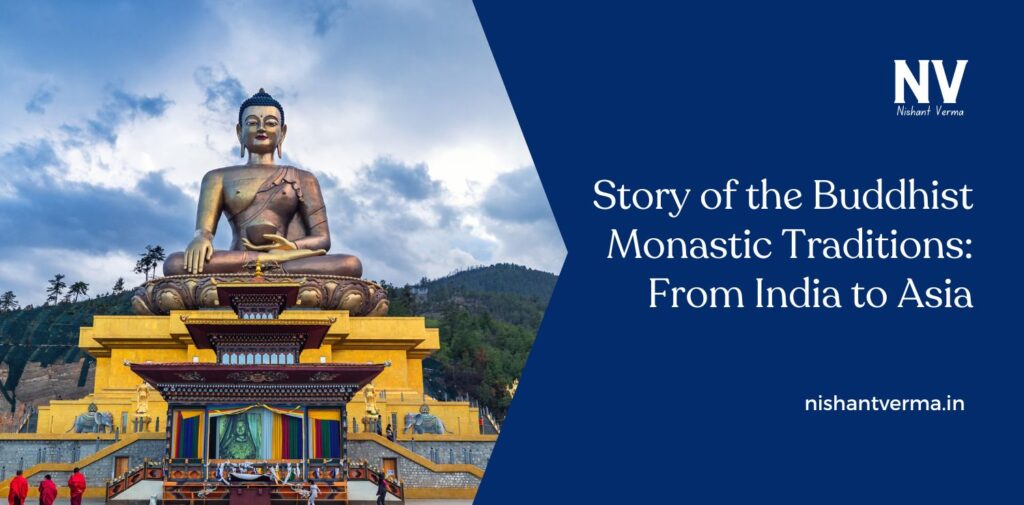Buddhism is one of the oldest religions in the world, and it all began in India, more than 2,500 years ago. One of the most important parts of Buddhism is the way of life followed by monks and nuns, known as the monastic tradition. These monks and nuns live simple, peaceful lives dedicated to meditation, prayer, and studying the teachings of the Buddha. Over time, this tradition spread from India to many parts of Asia, influencing countries and cultures in a big way. In this article, we’ll learn about the journey of Buddhist monastic traditions, how they started in India, and how they spread to the rest of Asia.
The Birth of Buddhism in India
Buddhism started in India around the 6th century BCE. A man named Siddhartha Gautama, later known as the Buddha, discovered the truth about life and suffering. He became enlightened after years of meditation and deep thinking. His teachings were simple but powerful. He taught people how to live a life free from suffering, through wisdom, ethical behavior, and mental discipline.
The Buddha encouraged people to leave behind their busy lives and meditate in quiet places. This led to the creation of Buddhist monasteries where monks and nuns could live, meditate, and practice the Buddha’s teachings. These monks and nuns became a very important part of Buddhist Monastic Traditions culture.

The Life of a Buddhist Monk
A Buddhist monk or nun lives a life of simplicity and discipline. They follow strict rules called the Vinaya, which guide how they should behave. They promise to live a life free from attachment to material things, focusing only on spiritual growth.
Monks live in communities called monasteries, which are often located in peaceful places like forests or mountains. They spend most of their time meditating, studying Buddhist Monastic Traditions teachings, and helping others. The goal of their life is to gain wisdom and reach a state of perfect peace, known as nirvana.
Living as a monk is not easy. They have to wake up early, meditate for long hours, and follow strict rules. They also have to beg for food each day, as monks do not own money or property. This way of living helps them to stay humble and focused on their spiritual journey.
How Buddhism Spread from India to Other Countries
After the Buddha’s death, his teachings were passed down by his disciples, who were also monks. These teachings spread slowly from India to other parts of Asia, with monks playing a big role in sharing the Buddhist message.

The Role of Emperor Ashoka
One of the most important people in the history of Buddhism is Emperor Ashoka, a ruler of India in the 3rd century BCE. Ashoka was a great king, but he became even more famous after a major change in his life. After winning a huge war, Ashoka felt sorry for all the lives lost. He turned to Buddhism for peace and decided to follow its teachings.
Ashoka sent many Buddhist monks to other countries to teach people about Buddhism. He even built stupas (Buddhist shrines) and monasteries along the trade routes to help spread the teachings. Thanks to Ashoka, Buddhism began to spread beyond India and reach places like Sri Lanka, Myanmar, and Central Asia.
The Spread to Sri Lanka
One of the first countries to receive Buddhism from India was Sri Lanka, an island nation just south of India. Emperor Ashoka sent his son, Mahinda, as a missionary to Sri Lanka. Mahinda taught the king and the people of Sri Lanka about Buddhism. The king accepted Buddhism, and soon, many people in Sri Lanka became Buddhists. Monasteries were built, and monks began to live in these places, spreading the Buddhist way of life.
Sri Lanka became a very important center of Buddhist learning, and the tradition of Buddhist monastic life continued to grow there. Even today, Sri Lanka has many famous Buddhist temples and monasteries.
The Spread to Southeast Asia
From Sri Lanka, Buddhism spread to other countries in Southeast Asia, such as Thailand, Cambodia, and Myanmar. In each of these countries, the monastic tradition played an important role. Monks traveled from one country to another, sharing Buddhist teachings, and building monasteries where people could learn and practice Buddhism.
In countries like Thailand and Myanmar, Buddhist monks became respected figures in society. They were not only teachers of Buddhism but also helped with education, social work, and even the arts. The monastic tradition was not just about meditation but also about making the world a better place.
The Spread to China
Buddhism reached China in the 1st century CE. This was a very important moment in the history of Buddhism because China was a huge and powerful country. The Chinese people had their own beliefs and culture, but Buddhism brought new ideas and practices to them.
At first, many Chinese people were not sure about Buddhism. But over time, Buddhist monks and scholars began translating Buddhist texts into Chinese. They also built monasteries and taught the Chinese people how to live according to the Buddha’s teachings.
As Buddhism grew in China, it spread to other countries in East Asia, like Korea and Japan. In these countries, Buddhist monks built beautiful temples and played a big role in the society. In Japan, for example, Buddhist monks became important teachers, helping to shape Japanese culture.

The Importance of Buddhist Monasteries
Buddhist monasteries became very important centers of learning and spirituality. Monks lived in these monasteries, where they could meditate, study, and share the Buddha’s teachings with others. These monasteries were also places where people could come to learn about Buddhism, practice meditation, and live a peaceful life.
In many countries, monasteries became the heart of the Buddhist community. They were places of worship, learning, and support for people who wanted to follow the Buddhist way of life. They were also places of kindness, where monks helped the poor, took care of the sick, and taught people how to live with love and compassion.
Buddhism in the Modern World
Today, Buddhism is still practiced by millions of people around the world, and Buddhist Monastic Traditions continue to be places of peace and learning. The monastic tradition remains a very important part of Buddhism, with monks living simple lives and dedicating themselves to spiritual growth.
Although Buddhism started in India, its monastic tradition has become a part of many different cultures across Asia. It teaches people how to live a peaceful, kind, and thoughtful life, and it has influenced many parts of the world, both in religious and cultural ways.
Conclusion :-Buddhist Monastic Traditions
The story of the Buddhist monastic traditions is a journey of peace, wisdom, and kindness that began in India and spread across Asia. From the time of the Buddha to today, monks have played an important role in sharing the teachings of Buddhism and helping people lead better lives. Through their hard work, dedication, and simplicity, they have inspired millions of people around the world to live in harmony with themselves and others. As Buddhism continues to spread, its message of peace and compassion will always be a source of hope and inspiration for the future.




